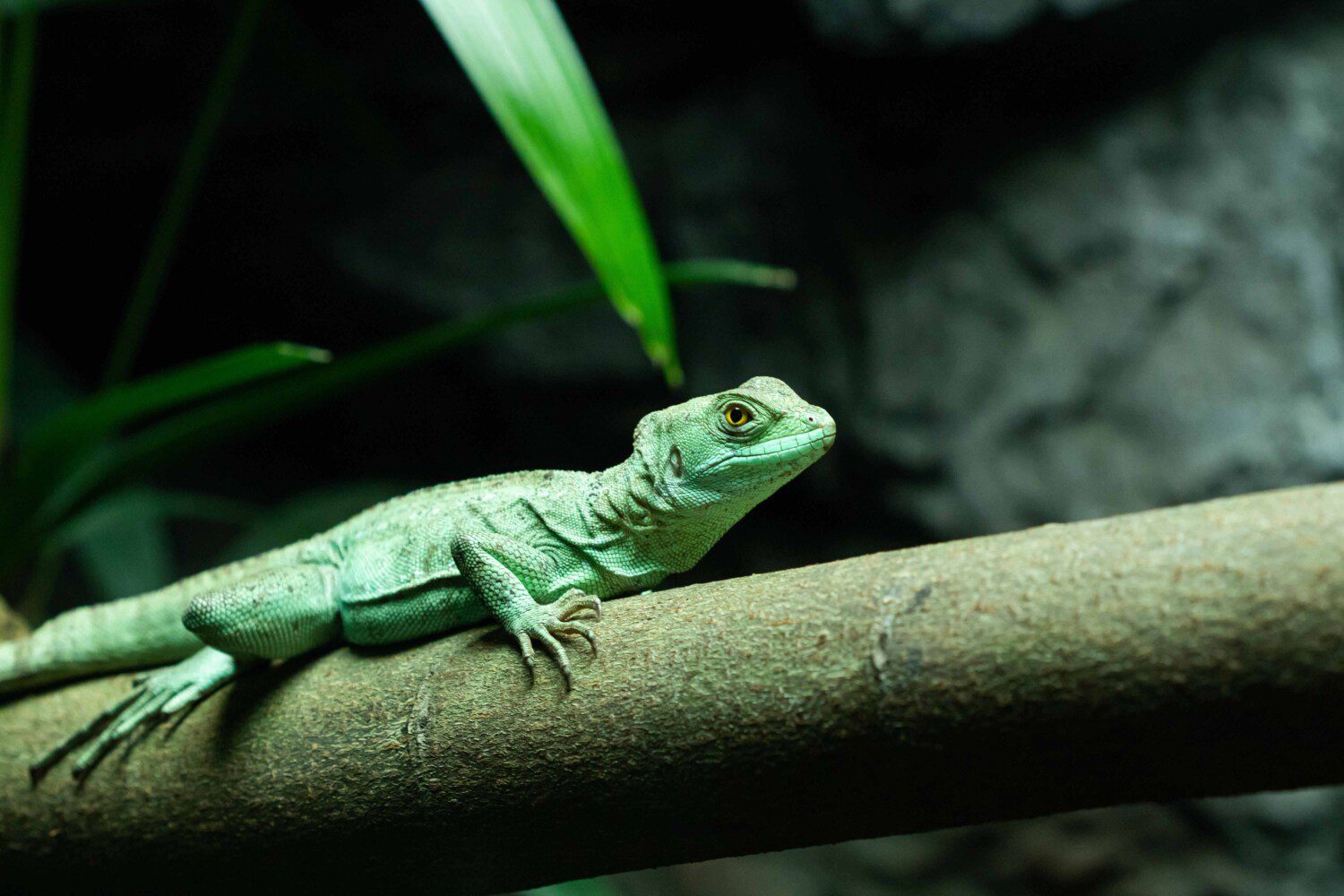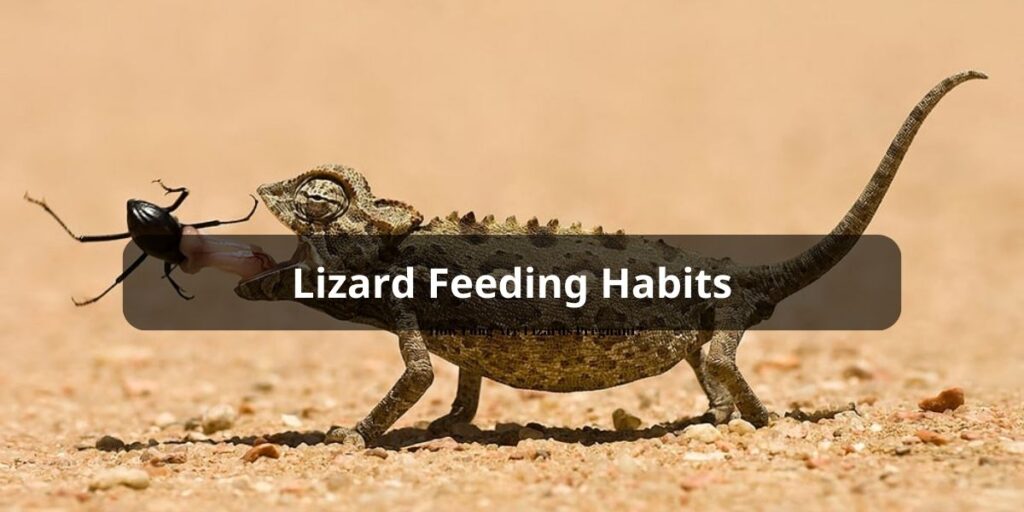Lizards are a diverse group of reptiles with over 6,000 species worldwide. Their feeding habits vary greatly across different species and depend on factors like habitat, climate, and the availability of prey. In this article, I will provide an overview of the main feeding habits and strategies utilized by lizards.
Lizards employ a range of feeding strategies to capture prey and meet their nutritional needs. The majority of lizards are carnivorous, meaning they eat other animals. They use keen senses of sight, smell, and vibration to locate prey. Once detected, lizards rely on stealth and speed to ambush their targets. However, some species use more passive means of hunting, such as waiting motionless for prey to come near.
Lizard diets consist mainly of invertebrates like insects, spiders, scorpions, and worms. Larger lizard species will also eat vertebrates including small mammals, birds, fish, and even other smaller lizards. Lizards are opportunistic feeders and will eat whichever prey is most abundant and easy to catch in their habitat.
Feeding Habits by Habitat
The habitat a lizard species occupies greatly influences its feeding habits and prey choices.
Desert Lizards
Desert-dwelling lizards like the collared lizard deal with sparse vegetation and high temperatures. To find prey, these lizards often scan the open ground from high perches. Their diet consists mostly of insects like ants, grasshoppers, beetles, and termites which are abundant in arid environments. Desert iguanas also eat plants occasionally.
Rainforest Lizards

Lizards of the rainforest canopy like chameleons and anoles actively pursue prey on branches and leaves amid dense vegetation. With an abundance of insects, small invertebrates and tree frogs make up the bulk of their diet. Species like the green iguana also eat fruits and leaves.
Aquatic Lizards
Semi-aquatic lizards like the marine iguana forage underwater for prey like algae and seaweed. Water monitors patrol river and lake edges seeking fish, frogs, crustaceans, and aquatic insects. Their streamlined bodies and tails adapted for swimming aid their underwater hunting.
Grassland Lizards
In wide open grasslands, lizards employ speedy movements and visual cues to find widely dispersed prey. Swift species like the six-lined racerunner chase down insects like crickets and grasshoppers. Fence lizards prefer more stationary prey like spiders, scorpions, and caterpillars found under logs and rocks.
Feeding Strategies
Lizards use a variety of techniques to actually capture and consume prey once located. These strategies cater to their natural capabilities and prey types.
Sit-and-Wait/Ambush Hunters
Many lizards including chameleons and geckos are ambush predators. They hide or camouflage themselves and wait stock-still for unsuspecting prey to come near. At close range, their specialized tongues covered in sticky mucus whip out and harpoon prey rapidly. Their element of surprise allows them to seize prey more powerful than themselves.
Wide Foragers
Smaller lizard species often actively canvass their habitat for prey. Examples like skinks and swifts cover wide areas searching for prey in crevices and under objects. Their continuously flickering tongues pickup chemical cues to locate food. Quick reflexes and short bursts of speed help them capture prey once detected.
Burrowers
Some lizards including many skinks spend much time underground and will poke their heads out of burrows to ambush passing prey. Their cryptic coloring hides them from potential predators while allowing them to launch surprise attacks on invertebrates and small vertebrates that pass by their burrows.
Strong Jaw Grabbers
Bulkier lizards like monitors and tegus use strong jaws and teeth to grab and crush prey. Their powerful bites allow them to subdue tougher prey like crabs, mollusks, eggs, and aquatic creatures with hard shells and exoskeletons. Repeated bites let them tear off manageable chunks.
Unique Feeding Adaptations
Certain lizard groups possess highly unique anatomy and behaviors related to feeding:
- Chameleons have incredibly long, sticky tongues which can extend over a full body length to snatch prey. Their grasping feet also aid in capturing prey.
- Horned lizards can shoot streams of foul-tasting blood from their eyes to deter predators. This unique defense allows them to ward off predators as they feed.
- Komodo dragons produce venomous saliva containing anticoagulants to infect prey during bites. Even if initial bites don’t kill prey immediately, the venom disables them allowing the Komodo to eventually consume them once they collapse.
- Marine iguanas possess sharp teeth adapted for grazing algae and seaweed of rocks underwater. Their laterally flattened tails provide powerful propulsion while swimming and diving.
Dietary Requirements
Lizards require specific balanced diets to stay healthy in captivity. Their keepers must recreate their natural diets via:
- Providing appropriate insect prey like crickets, roaches, worms, etc which form the bulk of most lizard diets.
- Dusting prey with vitamin/mineral supplements to balance nutrients.
- Offering vegetation including leafy greens, vegetables, fruits to herbivorous species.
- Supplying clean, fresh water at all times.
- Varying dietary components to ensure complete nutrition.
Getting lizard nutrition right avoids issues like metabolic bone disease, intestinal impactions, and obesity. A species-appropriate, varied diet supports good health and activity levels.
Conclusion
In summary, lizard feeding habits encompass a wide range of prey types and hunting strategies tailored to their habitats and capabilities. Arboreal, terrestrial, subterranean, aquatic, and open ground lizards all exploit specific food sources using sit-and-wait ambush tactics, wide-roaming foraging, speedy pursuit, powerful jaws, and unique adaptations like projectile blood spraying. Matching captive diets to their wild counterparts provides optimal nutrition. Observing lizard feeding firsthand offers fascinating insight into their biology and behaviors.
FAQs
Do lizards require a specialized diet in captivity?
Yes, many lizards require a specialized diet in captivity. Their dietary needs often depend on their species. Some are insectivores, others herbivores, and some omnivores. Providing a diet that mimics their natural food sources, along with necessary supplements, is crucial for their health.
Are there specific insects that lizards prefer?
Lizard preferences for insects can vary. Common choices include crickets, mealworms, and waxworms. However, preferences can differ by species. Researching the specific lizard’s natural diet is essential. It’s also beneficial to offer a variety of insects to ensure a balanced diet.
What role does temperature play in lizard feeding habits?
Temperature influences lizard feeding habits significantly. Lizards are ectothermic, meaning they rely on external temperatures to regulate their metabolism. They become more active and feed when temperatures are optimal. If it’s too cold or too hot, their appetite might decrease.
Can lizards go without food for extended periods?
Lizards can go without food for a period of time, depending on their species and health. Some can tolerate fasting for weeks, while others may require more frequent feeding. However, prolonged fasting can impact their health, so it’s best to consult a reptile expert if you notice reduced appetite.
Are there any feeding habits unique to certain lizard species?
Yes, certain lizard species have unique feeding habits. For instance, chameleons use their long, sticky tongues to catch insects. Green iguanas are primarily herbivores and favor leafy greens. Horned lizards are known to primarily consume ants. Understanding a species’ specific feeding habits is vital for proper care.



